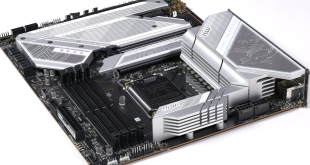The international edition of the HTC One X has quadband support for GSM (850, 900, 1800, 1900 MHz) and HSPA (850, 900, 1900, 2100 MHz) cellular connectivity. This means it is able to work on basically every mobile network around the globe – until you get to North America where there is so much diversity even we can’t get our heads around it. The One X is capable of HSPA+ and HSUPA connectivity with speeds theoretically peaking at 21 Mb/s down and 5.76 Mb/s up.
In our testing we found cellular reception to be flawless. Plus as the updates rolled in (from 1.26 to 1.28 to 1.29) reception was improved with progressive radio updates.
For what it is worth, above is a screenshot of a few speedtests. A peak of 4 Mb/s down and 2 Mb/s up is what we got, but as per your location and carrier you are bound to have different results.
Looking past the cellular radio, the One X is one of the first devices to ship with Bluetooth 4.0 that brings power drain improvements over previous versions. It also supports AptX as well, which is a higher quality audio over bluetooth codec than AD2P, which is also supported. We had no way of testing this but we did have a play with a Bluetooth mouse.
The mouse connected to the phone just fine and performed flawlessly except for page scrolling in Chrome where there was noticeable lag. Left click/drag does your usual touchscreen operations while the wheel can do scrolling in browsers and the application drawer.
On the Wi-Fi front the One X supports a/b/g/n networks as well as DLNA for wirelessly streaming media – but more on that a bit later on.
We found Wi-Fi to be a bit touch and go at times – especially after the latest update (1.29.401.11) where it was completely disabled for a few days. I was unwilling to pin this issue on either the phone or my home network at first. Disabling Wi-Fi auto-disconnect seemed to fix any issues and I have only encountered periodic issues since. When the issues did occur again, as crazy as it may seem, I found toggling random settings under the advanced Wi-Fi settings fixed the connection most of the time.
Wi-Fi performance was impressive, easily maxing out our 14 Mb/s down and 1 Mb/s up connection with pings equivalent to the phone’s long lost wired counterparts. Link speeds are capped at 65Mb/s which I believe is the phone's peak rather than my router's.
Text Messaging
The default messaging application at home on the One X is quite easily the smoothest I have experienced on any Android phone so far in my time. On other phones where there is a bit of lag, the One X appears to handle it with ease.
The One X messaging application is pretty standard – exactly like the one you will find on any other phone with threaded messages.
The search function searches both contacts and messages, although selecting a message earlier in the conversation only takes you to the most recent messages. There is also the ability to backup messages without the need for a third party app.
There is a email forwarding system built in which is to be honest going to be pointless and rather costly. Instead of using a data connection to send an email to yourself it sends a MMS message to your chosen email address.
Within the message threads themselves you can pinch-zoom to change the font size and browsing through the menu will allow you to select from a small collection of pre-determined messages such as “Check this out!” and “Urgent! Please reply…”
Phone Dialer
The Sense 4.0 dialer remains much the same as the one found on slightly older devices on Sense 3.x, except for some welcome user interface updates and other tweaks.
Filtering contacts either by name or number is possible and tapping a contact will of course call them.
The contact cards have Facebook and Skype integration, giving you quick access to their Facebook profile and photos. There is also a tab displaying recently used methods of contact with that person – although it is limited to text messages, calls and email.
Call Quality
Personally, I’m not a big user of the task that mobile phones were originally designed for all those years ago. Saying this, the calls that I have made were crisp and clear (well at least as far as a phone gets) on both ends of the radio waves.
 KitGuru KitGuru.net – Tech News | Hardware News | Hardware Reviews | IOS | Mobile | Gaming | Graphics Cards
KitGuru KitGuru.net – Tech News | Hardware News | Hardware Reviews | IOS | Mobile | Gaming | Graphics Cards












